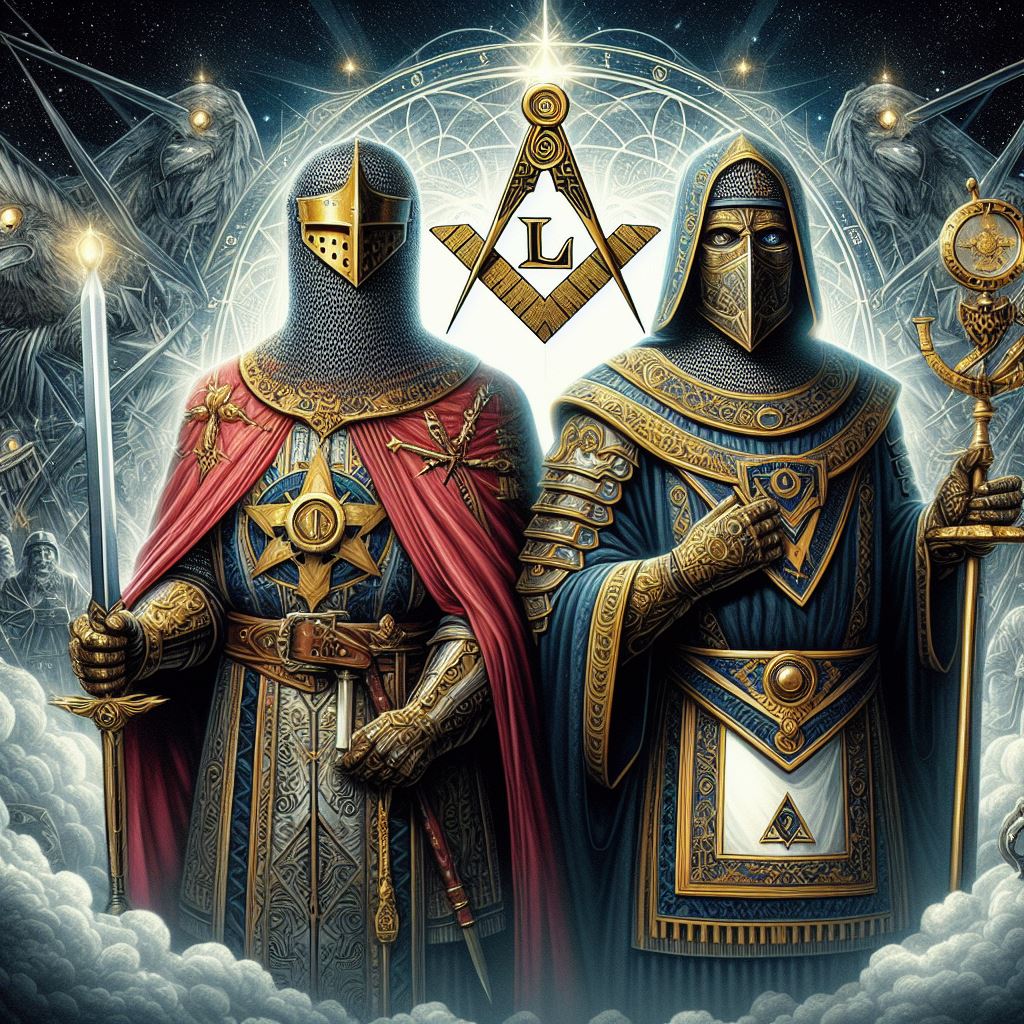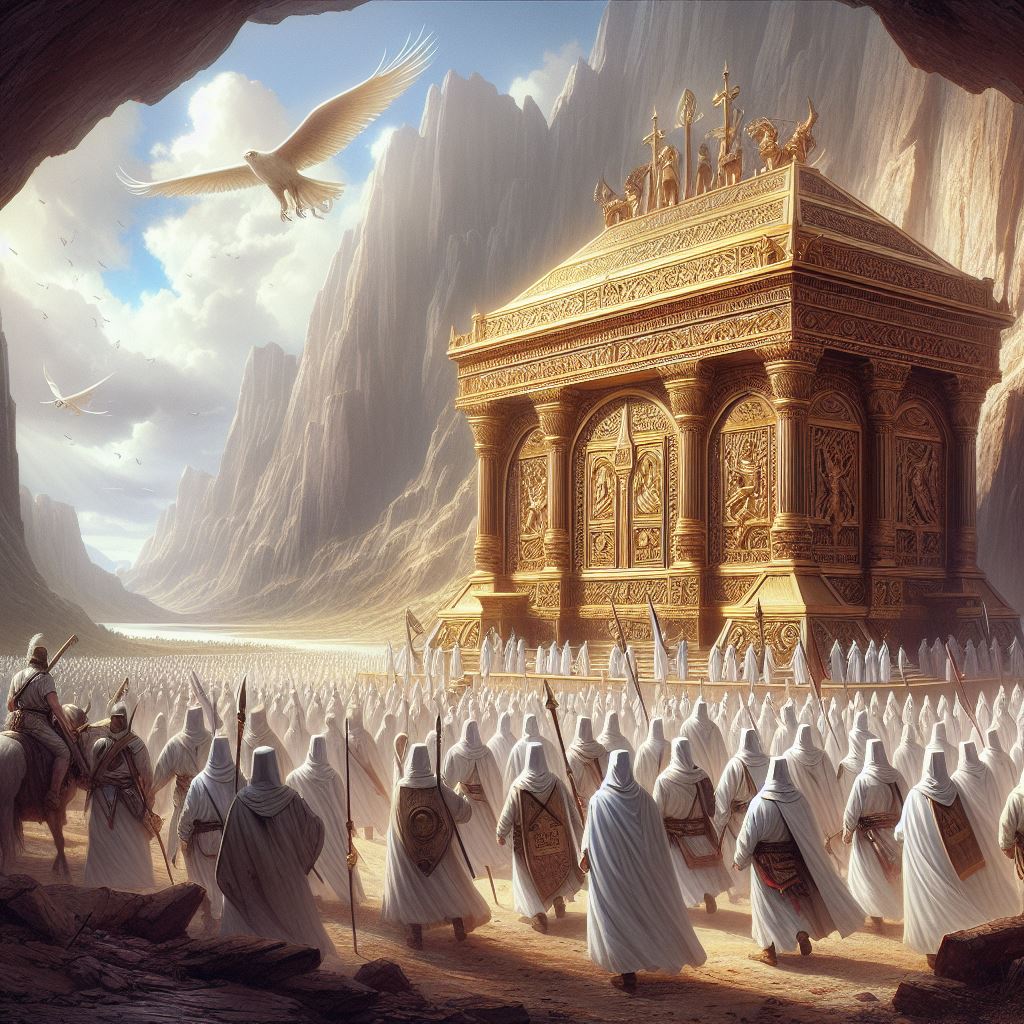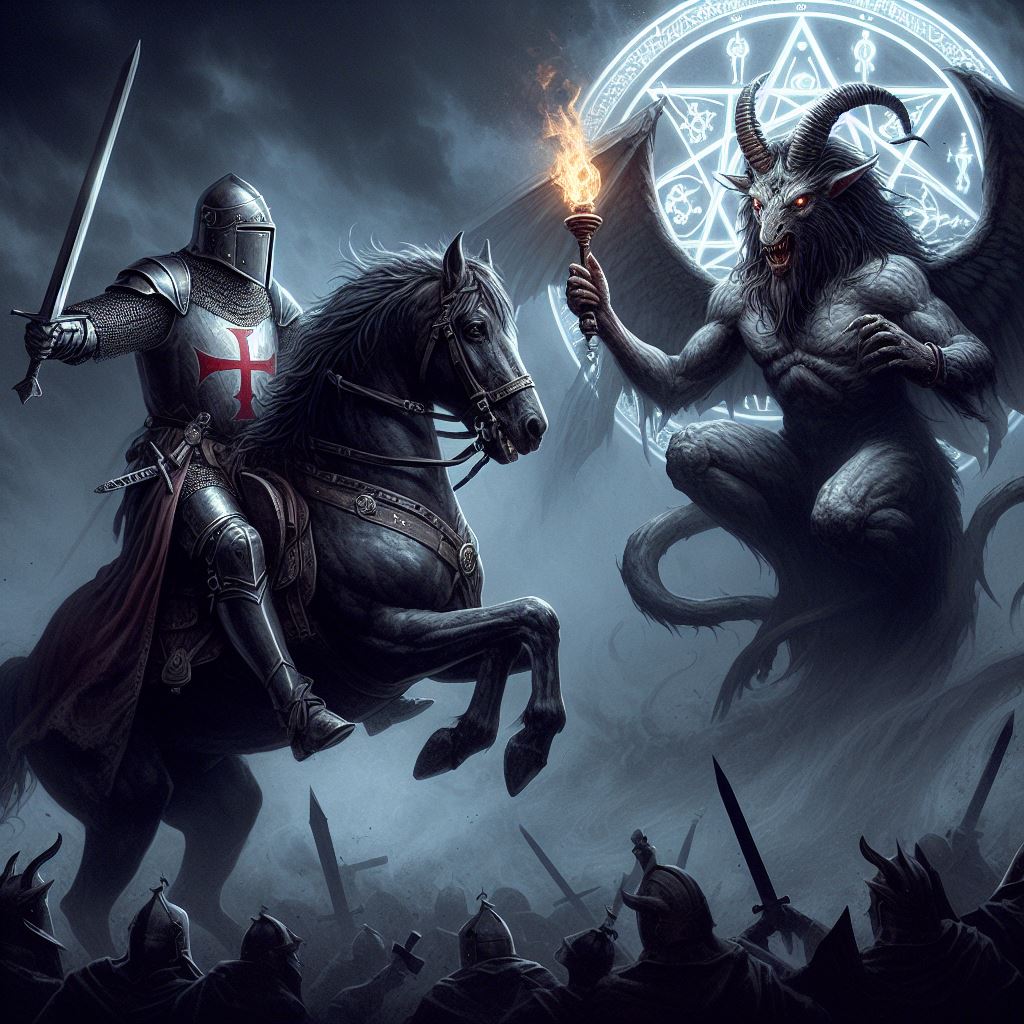Pumpkins, trick or treat and witch costumes. We all know about modern Halloween – but how might a Templar knight have celebrated Halloween hundreds of years ago?
Back in the early Middle Ages, the day we now call Halloween was more commonly called All Hallows Eve. It was the day before All Saints Day – a major Catholic feast.
Hallow came from an Old English word for holy or sanctified. The day was a liturgical vigil where the faithful were required to attend church, fast and pray.
But was there something more pre-Christian going on?
Halloween – start of the “blood month”
This time of the year was the transition from summer to winter. Peasants gathered in the harvest and in November they set about the ghoulish task of killing and salting their livestock. No wonder November was called the “blood month”!
The upside was there was plenty of food around and any excuse for feasting and getting drunk! But as Christianity took hold, the church took a very dim view of this bad behaviour by the peasants. There was way too much singing, dancing, gluttony and sinful goings on. So…the church tried to turn Halloween into a thoroughly respectful and prayerful event.
Some hope! Paganism just kept bubbling to the surface. Like a folk memory that refused to disappear. People still wanted to have some fun as the days got shorter and the nights got longer. Maybe communities recalled when they had lit bonfires to remind the sun god to return in the spring. Tales were told round those fires of prayers once said to the sun, thanking it for nourishing their crops.
Samhain – god of Halloween!
The church had a big job on its hands wiping out the memories of pagan gods like Samhain in ancient Britain. That was the lord of death, which gathered up souls of the evil imprisoned within the bodies of animals. Christians told their neighbours to forget Samhain and pray instead for those souls suspended in purgatory. And why not go door to door offering condolences for the bereaved? Unfortunately, that latter activity evolved into the more pagan trick or treat.
Dressing up in outlandish costumes had always been a part of pagan festivities and this element of Samhain worship could have trickled into All Hallows Eve. One idea is that the souls of the Christian dead wandered the earth until All Saints Day on November 1st. So, Halloween was their last chance to exact mischief on the living. Those not wishing to be recognised by the dead as they committed their last wicked deeds would wear masks and disguises – hence dressing up on this day.
The Roman goddess Pomona and Halloween
Comparisons are also made to the Roman festival around the goddess Pomona. Her symbol was an apple and it’s been posited that the origin of apple bobbing at Halloween comes from Pomona related rites. It’s hard to deny that Christians reworked Roman festivals into the new religion, giving them new meaning. There’s evidence that the church actively discussed the dilemma of winning over converts who were attached to the old pagan ways. The solution seems to have been to let the common people carry on with their superstitions but direct their gaze to the Christian god instead.
The Pantheon in Rome and Halloween
The 31st October comes right before All Saints Day – November 1st – a feast called Hallowmas. Therefore Halloween was the eve before this important event in the liturgical calendar. It’s a Christian feast day believed to date back to the seventh century AD when the Pantheon, a vast and still standing temple built by the emperor Hadrian, was re-dedicated to all the saints. It had previously been dedicated to all the gods – but there was only one god now!
That was followed in the eleventh century with the introduction of All Souls Day on November 2nd. In case you’re confused – All Saints Day celebrated those who had succeeded in entering heaven while All Souls Day involved lots of praying for those who had not – lingering instead in purgatory (God’s waiting room). So a lot of attention was paid to the fate of the dead at this time of year, which has obviously informed the modern Halloween. Even our use of scary spiders, toads and bats reflects creatures within whom the souls of those in purgatory were sometimes thought to inhabit while they waited for their ticket into heaven.
I realise there is a terrific amount of soul searching – pardon the pun – over the Christian meaning of Halloween. I’m happy to hear your views and have some discussion about this ahead of the big day!
Related articles
- How the Tradition of Trick or Treating Got Started (todayifoundout.com)
- HALLOWEEN: An American Holiday, an American History… (bigseance.com)
- Irish Halloween Traditions (blogotheirish.wordpress.com)
- History of Halloween (hsjhpantherpress.wordpress.com)
- The Celtic New Year Festival of Samhain (permaculturecottage.wordpress.com)












A few words on this blog post…
1. Bonfires were not lit to propitiate the sun god but they were used as a cleansing ritual for cattle and people as they would walk in between them to be purified and the bones of cattle would be thrown onto the fires
2. Samhain did not originate in ancient Britain but was a Gaelic feast (in Ireland, Scotland, Cornwall, Brittany and the Isle of Manx but not in England) as the end of harvest and the beginning of winter. It has been found in early Irish literature and mythology so the origins of Samhain is not widely challenged. During the Celtic Revival Samhain became popular again and was referred to as the Celtic new year.
3. Halloween predates the Middle Ages and thus its roots lie not in that era but the word “Halloween” stems from the Middle Ages.
Reblogged this on Bible Study Truth Today.
Thanks for the reblog!
mind reblogging us aswell?
I spent a good portion of this dreary day in Anoka, Minnesota, which proudly declares itself the Hallowe’en capital of the new world and the first to celebrate Trick or Treat. Truth or not? Who is to say. However it is a delightful serendipity to read this on my return this evening.
My apologies, Sir Knight, a small correction. No serious scholar believes Samhain to have been a god of the ancients. In Celtic lands Samos was the season of summer, commencing at Mayday, or Beltaine and lasting half the year. The Gamos, or winter half, began at Samhain which most believe to mean “summer’s end”. I refer you to Alwyn Rees and Brinley Rees “Celtic Heritage – Ancient tradition in Ireland and Wales” 1961, 1978, 1994 by Thames and Hudson and to the esteemed professor of history Bristol, Ronald Hutton “Stations of the Sun A History of the Ritual Year in Britain” 1996 by Oxford University Press
Emrys
There is no Samhain lord of death. The word and festival means end of summer and can be found in any Gaelic dictionary.
The Samhain theory is certainly widely challenged – thanks for your contribution to this debate!